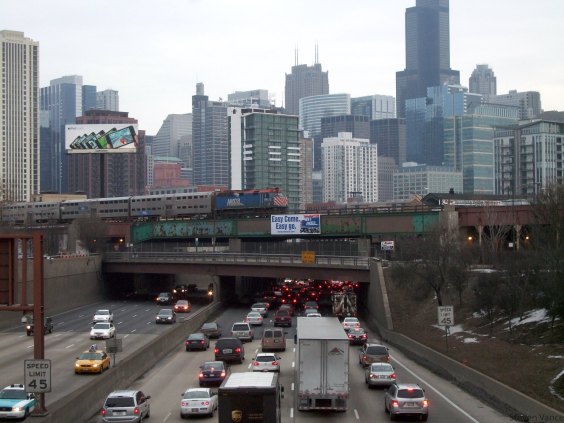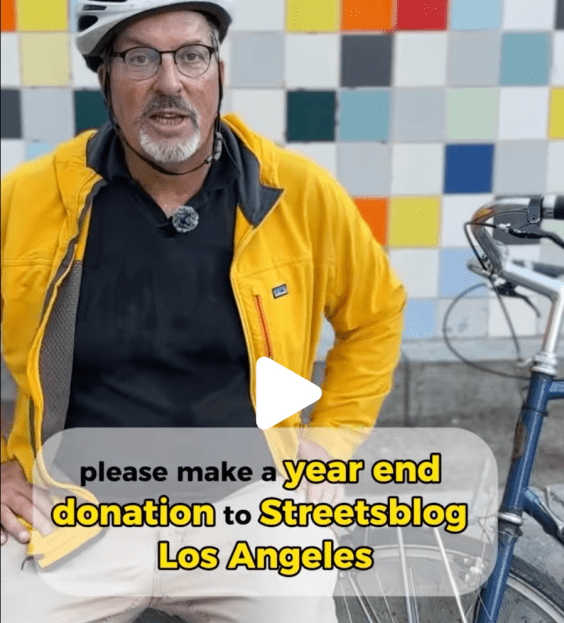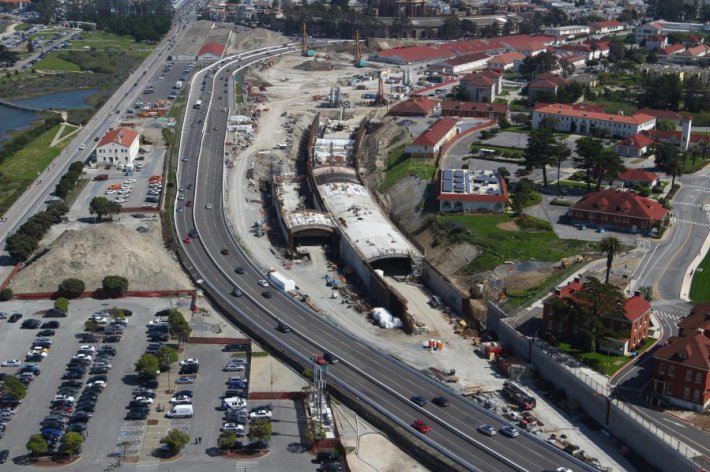
When visitors land on the front page of the Presidio Parkway's website, they see an animated pelican emerging from beneath the Golden Gate Bridge, gliding across green hills and blue skies. When the bird lands, you can "Meet Parker" with a click and learn all about the Presidio Parkway Pelican.
The PR team for this freeway project wants you to know that Parker the fictional pelican is "very excited about the improvements the new Presidio Parkway will bring to his favorite national park!"
This "former military pilot" even has his own color-within-the-lines page [PDF] that parents can print out for their kids to fill in. Perhaps that helps distract the whole family from the $1.4 billion taxpayers will be forking over for the next 30 years to build a one-mile freeway connecting the Golden Gate Bridge to San Francisco's Marina District.
The Presidio Parkway probably needs a re-branding campaign like this to make it palatable to the public. With the images of birds, clouds, and rolling hills, you can't really tell that this project is about building a gargantuan concrete structure. In fact, the website insists that it's "a parkway, not a freeway" with a logo depicting a quaint, narrow road, somehow free of motor vehicles, snaking through the grass to everybody's favorite bridge.

There's no doubt the depression-era Doyle Drive needed to be replaced, and there's good reason the design of its successor has been deliberated since the 80s. The elevated highway was crumbling and would likely have succumbed to the next big earthquake. Designed to steer the motoring public around the former Presidio military base, it cut off the national park from the Bay.
The new road will be less of a monstrosity, and the temporary structure built in the first phase has already provided a "seismically safe" road for drivers. Car traffic is currently routed through the first of four planned tunnels via a temporary bypass road. In 2015, both pairs of tunnels are expected to open, and on top of them will be 13 acres of parkland that people and wildlife can traverse freely to Crissy Field.
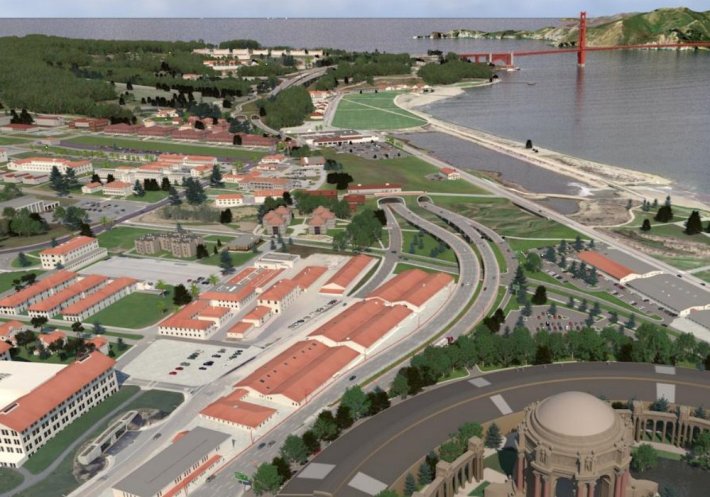
This concept of partially "hiding" the freeway blew away all of Caltrans' original proposals when it was presented by a landscape architect in 1988. But financing and constructing the "parkway" has been problematic -- hardly the cost-saving, low-impact endeavor it was meant to be. And these days, the concept itself is feeling stale -- it's no wonder so much marketing effort has gone into selling people on the not-a-freeway. "Hiding," it seems, is a prevailing theme for the project.
$1.4 billion can buy San Francisco a lot of transportation infrastructure. It can replace Muni's entire light-rail fleet of 155 cars, expand it by 105, and still leave $200 million leftover. It can build a seamless network of protected bike lanes, transforming San Francisco into a bike-friendly city on par with Copenhagen or Amsterdam -- more than twice over. $1.4 billion is nearly four times the $363 million needed to implement pedestrian safety measures that could cut injuries on SF's streets in half.
But that's the Presidio Parkway's price tag, far more than the cost estimates for the most expensive early Caltrans proposals -- $600 million. When SF voters approved Prop K, the local half-cent transportation sales tax in 2003, the budget was $400 million.
The ballooning price tag was largely due to a private-public partnership with a European group of companies headed by the German firm Hochtief and the French firm Meridiam Infrastructure. The deal to have the firms shoulder the freeway cost upfront, then pay them back over 30 years, was reached at a time when the state was particularly cash-strapped. The SF County Transportation Authority also claims the partnership actually lowers costs by reducing overruns.
As the Bay Citizen reported in 2012, the Professional Engineers in California Government, a labor union, sued the state, saying the arrangement "would cost twice the traditional method of building highways."
The California Legislative Analyst's Office agreed in a 2010 report, saying the public-private partnership was “not likely to be a good fiscal deal for the state. They said the second phase would cost the state $594 million.
The lawsuit was dismissed. But much of the cost of the two-phase freeway project could also have been avoided with a much smaller and more efficient design, with two tunnels instead of four. Instead of one "Main Post" tunnel and one "Battery Tunnel" as originally envisioned, there will be two sets of two tunnels for each direction of traffic. That requires a costly second phase and temporary bypass road so that three of the tunnels can be built in the meantime.
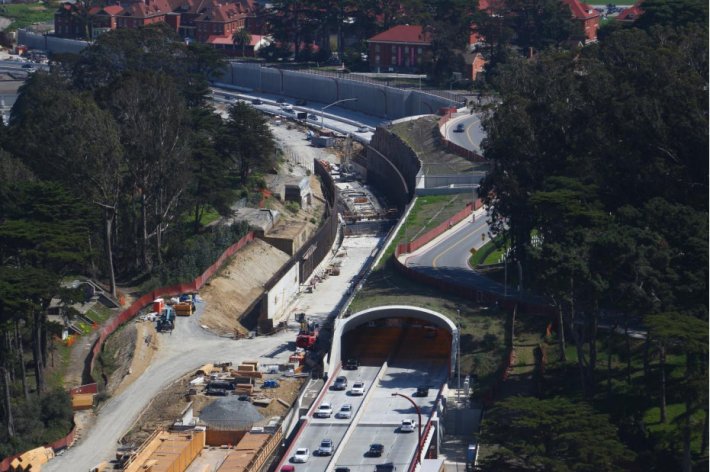
"It would've saved years of construction and hundreds of millions of dollars," said Jim Chappell, who was the executive director of SPUR at the time the organization pushed for a "graceful" replacement of Doyle Drive in the 1990s and 2000s.
The Presidio Parkway will have six traffic lanes but will be more than double the width of the original Doyle Drive due to the pairs of tunnels, a wide center median, shoulder lanes, and a seventh "auxiliary" lane at junctions.
"It's the way American engineering bureaucracies run," said Chappell. "The mentality is they're always looking for the biggest engineering solution, they're never looking for the soft solution, the ecological solution."
On the temporary bypass road today, traffic seems to be flowing fairly smoothly, with traffic in both directions fitting through one tunnel. But Caltrans and many planners overseeing the project don't like it.
"It's serving admirably to move the traffic that we have, but doing that requires this movable median barrier that goes back and forth, and there are no shoulders available," said Lee Saage, the SFCTA's deputy director for capital projects.
Saage said the freeway would be overwhelmed if Caltrans didn't close the ramp that used to connect northbound highway 1 to southeast 101, allowing drivers coming from Park Presidio in the Richmond to transfer directly to the Marina. That ramp will be re-opened when the project is completed.
"Part of the reason we're coping with it is because we've closed off some of the access," said Saage. "Once you have the full facility, you'll have the shoulders on both sides of the roadway that'll provide refuge in the event of a traffic accident or injury, and allow us to reconnect all those local movements that were closed."
A movable median barrier, which is shifted by crews on a vehicle between rush hours to change the direction of the center-most traffic lane, is currently being built on the Golden Gate Bridge at a cost of $30 million. And the Presidio Parkway "didn't need shoulders for a one-mile-long road," said Chappell. "You could've had emergency turnouts here and there."
Still, Chappell said the Doyle Drive replacement was poised to be far worse with Caltrans' original proposals for an eight-lane freeway, until landscape architect Michael Painter presented the winning concept. Chappell largely credits former SFCTA Executive Director Jose Luis Moscovich for convincing Caltrans to concede its "lead agency" status on the project to the SFCTA.
In an article recounting the history of Doyle Drive planning, SPUR notes that "traffic engineers shot down many of SPUR’s and Painter’s novel ideas as dangerous because they weren’t what drivers expected to experience."
"There are over 500 exceptions from the standards in the way that it was finally designed," Chappell told Streetsblog. "We didn't get 100 percent of everything we wanted, but we got a lot."
Yet, as Chappell wrote in another SPUR article, "The word 'parkway' has been corrupted to mean just about anything, from a straight urban street with a planted median, to any wide road so designated by a real estate salesperson."
And when calling it a "parkway" isn't enough, there's always Parker the Pelican.


